I'm looking for a library to which nodes and edges can be supplied and which generates a coordinate list of all the nodes laid out nicely. However, it should be possible to supply fixed positions for some, but not all nodes which the layout algorithm should respect.
I have tried graphviz (fdp, neato) so far, which does not seem able to keep the position of certain nodes and built the layout around them.
The library has to be usable with python, so it should be either python or c/c++ so we could write our own binding.
The following pictures illustrates exactly what I'm looking for (this is the uDraw-project, which does not seem to exist as a library).
